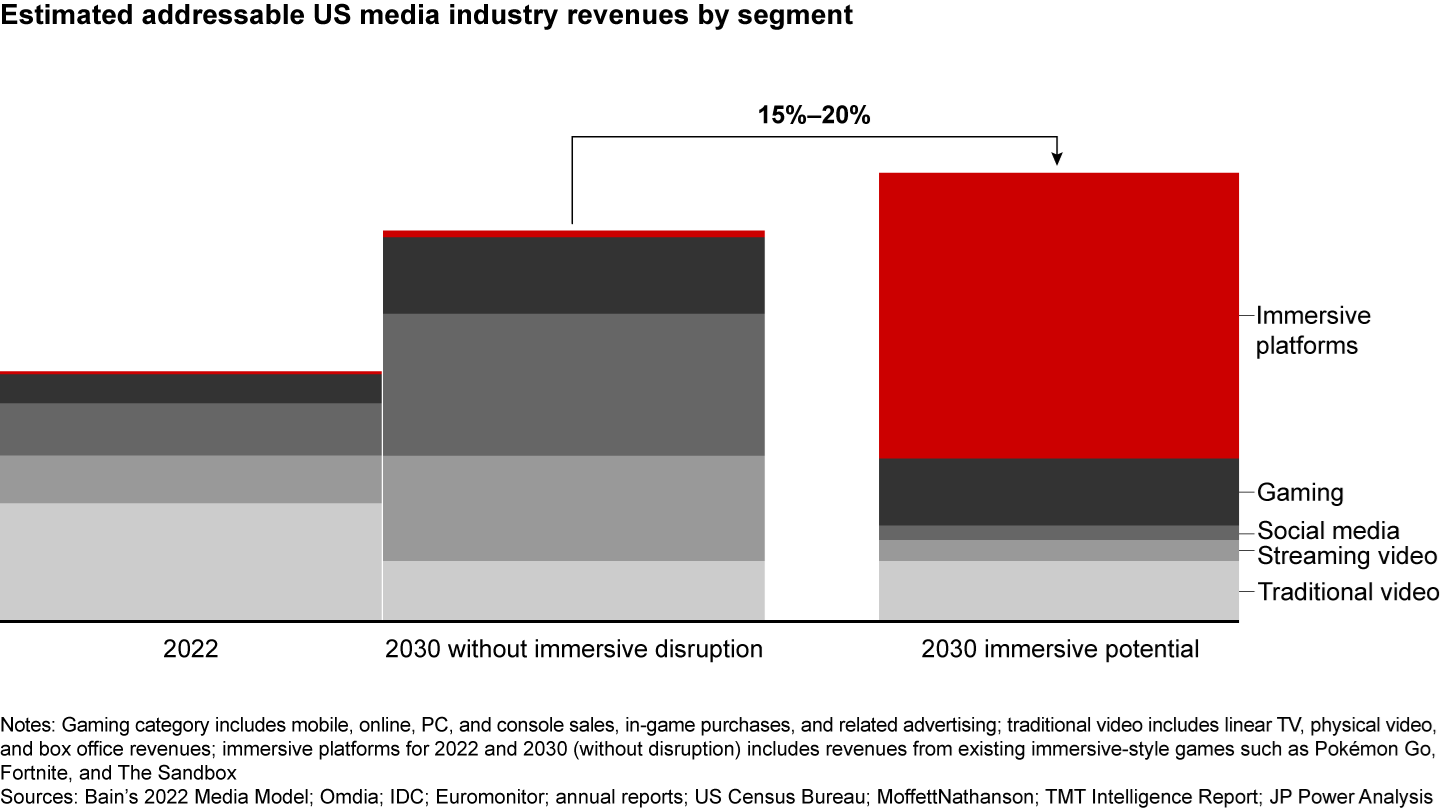At a Glance
- The media industry is entering a new era of more immersive content.
- Revenue streams from immersive platforms could grow US media revenues by as much as 20% by 2030.
- To prepare, media companies should build up their capabilities to develop “lean-in” content, real-time operations, and nonlinear storytelling.
The media industry is on the precipice of a major disruption as we enter what might be called the Immersive Era. Although interest in the metaverse has taken a back seat over the past year to the tidal wave of enthusiasm around generative AI and its ability to generate content, a more fundamental shift is coming in what and how we consume. Bain’s research has found that online games are the tip of the spear in immersive media, and these are quickly becoming platforms where consumers do much more than just play games. Meaningful value is at stake; our analysis of the revenue streams associated with these activities and related advertising suggests that the potential of immersive platforms in entertainment could grow the US media market by 15% to 20% by 2030 (see Figure 1).
Immersive platforms could increase US media market by 15%–20%


The implications for media companies are significant. Interactive brand placement and a better understanding of customer preferences could help spike advertising spending, absorbing the decline from linear channels. As consumers shift away from current digital and physical entertainment options, immersive media stands to gain market share through a combination of traditional revenue streams such as subscriptions and new ones like “in-experience purchases” (such as digital items one might buy within a game). Immersive platforms could also accelerate the decline of traditional video and displace the streaming services and social media platforms of today.
One way to think about this shift is the difference between traditional “lean back” entertainment (everything from books to streaming media) and “lean in,” which is more interactive and engaging (see Figure 2).
The Immersive Era will usher in meaningful change to the entertainment experience
History would suggest major disruptions are born out of the combination of three factors: consumer demand, changes in technology, and market shifts. Our conversations with executives and observations of the industry landscape suggest the necessary elements for the Immersive Era are already here.
Two types of immersive environments are likely to coexist: the walled garden and the broad entertainment platform. Both types of platforms bring together a range of different media types (video, gaming, music) into a common gathering place. Both generate revenue from ads, subscriptions, and other purchases. But they differ in ownership and content provider models, with varying implications for participants.
Adoption speeds may vary, but recent disruptions suggest this could occur in just a few years: scale adoption of social media and video and music streaming took only six to eight years. Media companies should start building their view of how the future will unfold and a strategy to win. Leadership teams should focus on three priorities.
The Immersive Era is upon us, and the lesson from previous industry disruptions is that early movers will gain a competitive advantage that will be difficult for later entrants to overcome. Where is your company positioned to win in this next era?



0 Comments